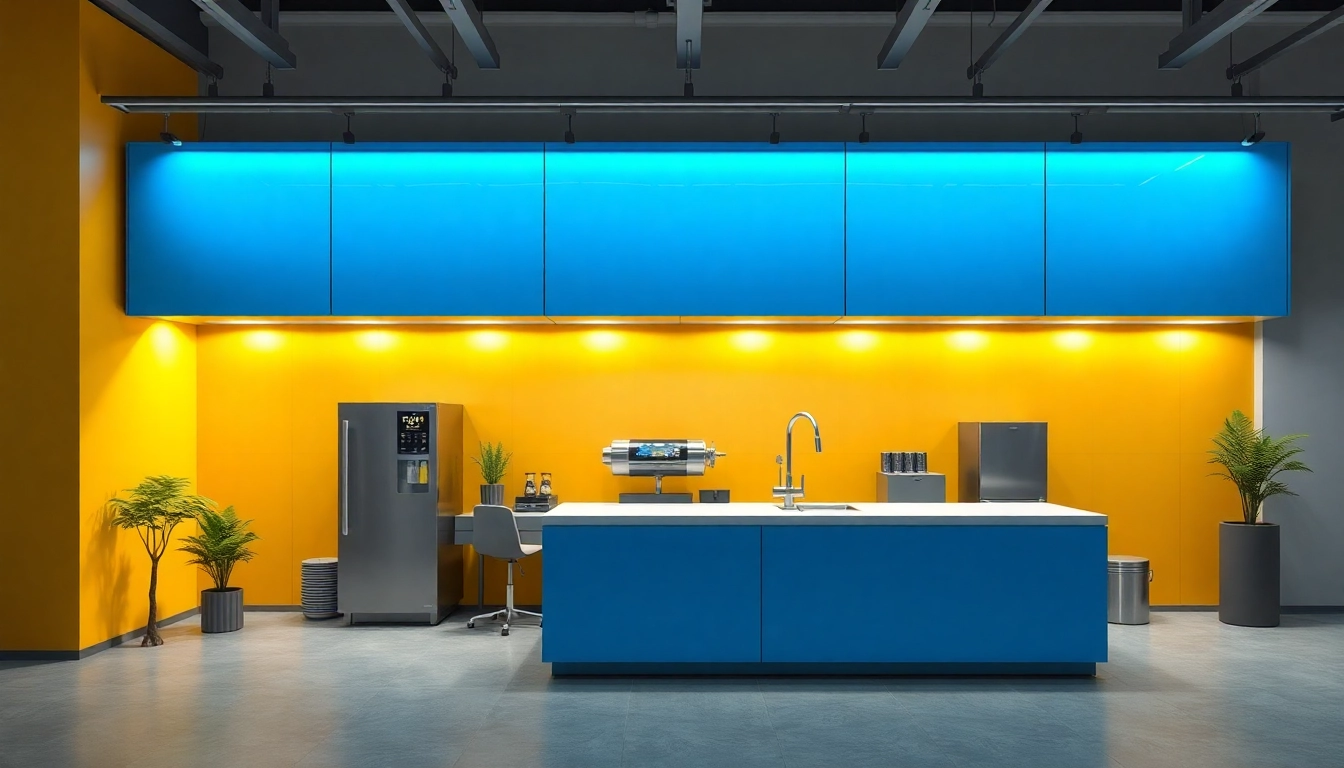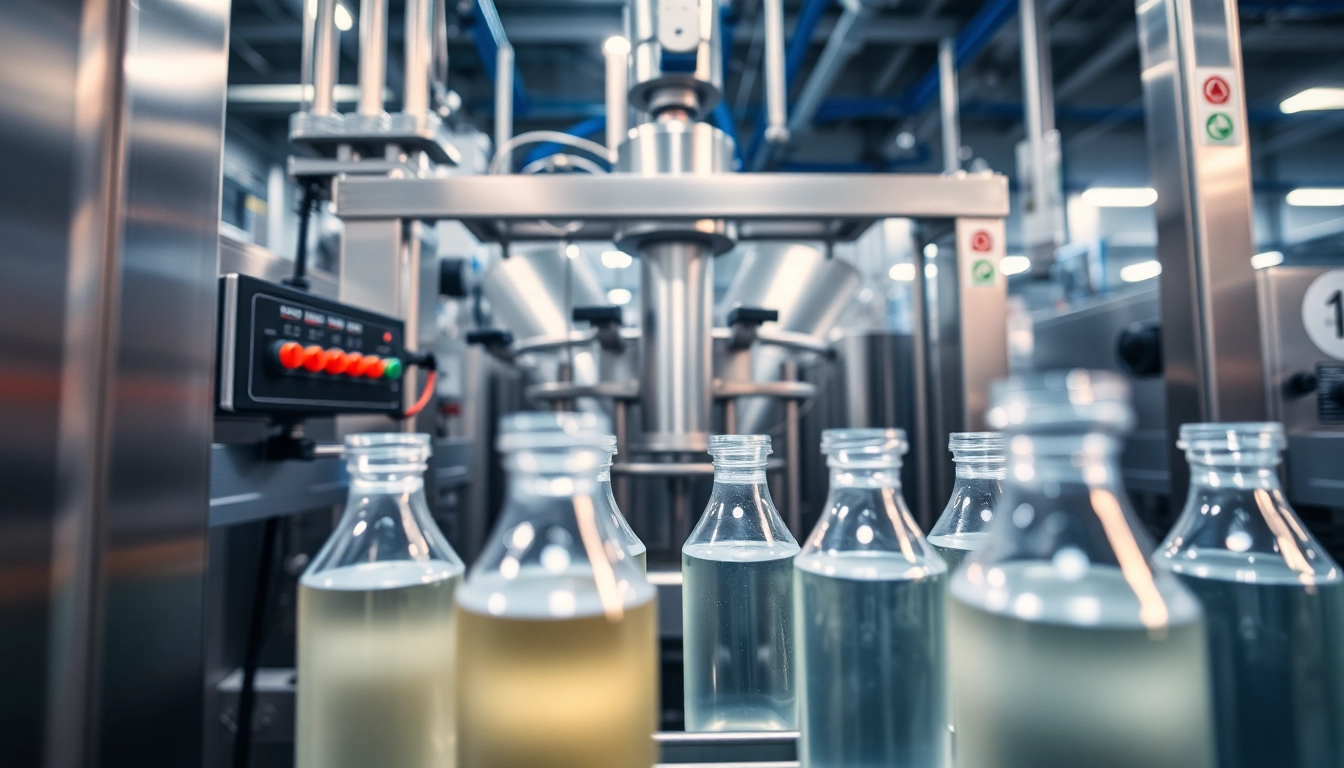Understanding Liquid Packaging Machines
What is a Liquid Packaging Machine?
A liquid packaging machine is a piece of equipment designed specifically for packaging liquid products into containers such as bottles, pouches, or bags. The technology involved in these machines ensures that the product is safely and efficiently filled, sealed, and labeled to prevent contamination and spillage. The rising demand for liquid products across various industries such as food, beverage, pharmaceuticals, and chemicals makes liquid packaging machines an essential component of manufacturing operations.
These machines are engineered to handle a diverse range of liquids, including water, juices, oils, sauces, and even viscous materials like creams and gels. They are integrated with advanced technology to enhance efficiency, accuracy, and reliability in the packaging process. This focus on automation helps manufacturers boost production rates while maintaining the quality and safety of their products.
Types of Liquid Packaging Machines
Liquid packaging machines can be categorized based on their operation modes, filling mechanisms, or types of containers they can handle. Understanding these variations helps businesses select the right machine for their specific needs.
- Automatic Liquid Packaging Machines: Fully automated systems that manage the entire packaging process from filling to sealing and labeling, requiring minimal human intervention.
- Semi-Automatic Liquid Packaging Machines: These machines require some manual input, typically during loading and unloading processes but automate the filling, sealing, and labeling.
- Gravity Filling Machines: These machines utilize gravitational force to fill containers, making them ideal for low-viscosity liquids.
- Piston Filling Machines: Suitable for viscous liquids, these machines employ a piston to accurately dispense a specific volume of product into containers.
- Vacuum Filling Machines: Utilized primarily for bottles, these machines fill liquids by creating a vacuum that draws the liquid into the container, reducing air exposure.
- Flow Meter Filling Machines: Using flow meters to measure the amount of liquid filled, these machines are perfect for achieving high accuracy, particularly for thin liquids.
Benefits of Efficient Liquid Packaging
Implementing efficient liquid packaging systems comes with numerous benefits that positively impact production, brand reputation, and environmental sustainability.
- Increased Production Rates: Automated liquid packaging machines significantly enhance production speeds, allowing businesses to meet high demand without sacrificing quality.
- Improved Accuracy: Advanced filling technologies reduce the likelihood of overfilling or underfilling containers, which helps companies manage costs and maintain quality standards.
- Enhanced Product Safety: Proper packaging minimizes product exposure to contaminants, ensuring consumer safety and extending shelf life.
- Cost Efficiency: While the initial investment in high-quality packaging machines may be significant, the long-term operational efficiencies lead to lower labor and material costs.
- Sustainability: Many modern liquid packaging solutions are designed to be eco-friendly, utilizing recyclable and biodegradable materials, which align with global sustainability goals.
Choosing the Right Liquid Packaging Machine Supplier
Key Factors to Consider
Finding the right liquid packaging machine supplier is critical to the success of any liquid packaging operation. Several key factors must be evaluated to ensure that the chosen supplier aligns with your production needs and business goals.
- Experience and Reputation: It’s essential to select a supplier with a proven track record in the industry. Research their history, client testimonials, and case studies to assess their reliability and expertise.
- Technical Support: Look for suppliers that offer robust technical support and customer service. This includes training, installation, and quick responses to any technical issues that may arise.
- Product Range: A versatile supplier will provide various models and types of machines that can meet different production needs, allowing flexibility as demands change.
- Compliance with Standards: Ensure that the machines meet all industry regulations and standards. This is especially crucial for sectors like pharmaceuticals and food and beverage.
- Customization Options: Depending on product specifications, some businesses may require customized machines. Suppliers that offer tailored solutions are preferable for unique operational needs.
Evaluating Supplier Expertise
Evaluating the expertise of a liquid packaging machine supplier involves more than just assessing their product offerings. Here are key indicators of a supplier’s proficiency:
- Industry Knowledge: A knowledgeable supplier understands the unique requirements of your industry and can provide solutions tailored to those needs.
- Technological Innovations: Suppliers taking advantage of the latest innovations in liquid packaging technology can provide more efficient and cost-effective solutions.
- Collaborative Approach: A good supplier should be able to work alongside your company to address specific packaging challenges, suggesting improvements or modifications as needed.
- Quality of Products: Investigate the quality control processes they have in place. The manufacturer should be committed to maintaining high standards in production.
Comparing Pricing and Terms
While price shouldn’t be the only determining factor, it is important to perform a thorough analysis of the costs involved. When comparing suppliers, consider the following:
- Initial Purchase Price: Evaluate the upfront costs of the machinery but be wary of low-cost options that may compromise quality or reliability.
- Maintenance Costs: Understanding the long-term maintenance and parts replacement costs will help in budget planning and total cost of ownership.
- Payment Terms: Discuss payment options with suppliers. Flexible payment terms can significantly ease financial strain during the initial investment phase.
- Warranty and Service Agreements: A thorough warranty and service agreement can protect your investment and ensure ongoing operations without significant interruptions.
Innovations in Liquid Packaging Technology
Automated vs Manual Systems
The shift from manual to automated liquid packaging systems has transformed the industry, enhancing productivity and reducing labor costs. Automated systems leverage robotics and advanced technologies to perform essential tasks such as filling, sealing, and labeling.
While manual systems still exist, particularly in smaller operations or niche markets, automated solutions provide significant advantages:
- Consistency: Automation reduces human error, leading to more consistent fill volumes and improved product quality.
- Scalability: Automated systems allow for easier scaling of production, accommodating increased demand without extensive workforce expansion.
- Operational Efficiency: By minimizing downtime and streamlining processes, automated machines enhance overall operational efficiency.
Adoption of Smart Technologies
The integration of smart technologies—such as the Internet of Things (IoT), artificial intelligence (AI), and machine learning—into liquid packaging systems marks a significant advancement in the industry. These technologies offer various benefits:
- Predictive Maintenance: IoT-equipped machines can monitor performance in real-time, predicting maintenance needs before issues arise, thus reducing downtime.
- Data Analysis: Smart packaging technologies can collect and analyze data to improve filling processes and identify trends, increasing efficiency.
- Enhanced Traceability: Smart systems can help manufacturers track products through the supply chain, providing better insights and aiding regulatory compliance.
Case Studies of Successful Implementations
Successful implementations of liquid packaging technology can serve as a source of inspiration and guidance for other businesses. For example, consider a mid-sized beverage company that adopted an automated liquid filling line:
The move from manual filling processes reduced labor costs by over 30%, allowing existing staff to focus on quality assurance and production management rather than repetitive tasks. Furthermore, the automated system increased fill accuracy to 98%, which lowered raw material costs from excess spillage and wastage.
This investment also led to increased production capacity, enabling the company to respond to market demand more swiftly. Ultimately, embracing technology not only improved their bottom line but also enhanced their reputation for quality and reliability in the market.
Common Challenges Faced by Liquid Packaging Suppliers
Regulatory Compliance Issues
Compliance with industry regulations poses a significant challenge for liquid packaging suppliers. Different sectors have specific rules regarding product safety, labeling, and packaging materials.
Manufacturers must stay updated with regulations imposed by agencies such as the FDA (Food and Drug Administration) in the United States for food and beverage products, or similar bodies worldwide. Failure to comply can lead to product recalls, fines, and damage to brand reputation.
To navigate these challenges:
- Regular Training: Staff should undergo regular compliance training to ensure everyone is aware of current regulations.
- Partnering with Experts: Collaborate with legal and regulatory specialists to understand evolving laws and implement necessary changes in packaging processes.
- Regular Audits: Conduct internal audits and inspections to ensure ongoing compliance with industry standards.
Handling Different Liquid Types
Liquid packaging suppliers often face the challenge of adequately handling varied liquid types, including corrosive, viscous, and sensitive materials. Each of these requires specialized handling protocols and equipment.
For instance, packaging sensitive liquids, such as pharmaceuticals, requires systems equipped with additional safeguards to prevent exposure to environmental contaminants. Products like oils and syrups require different filling mechanisms that account for viscosity.
Strategies for addressing these challenges include:
- Customized Solutions: Work closely with packaging machine suppliers to develop customized machinery tailored to your specific liquid types.
- Material Compatibility: Ensure that all components of the packaging machinery are compatible with the liquid to prevent reactions and contamination.
- Trial Runs: Conduct trial runs on new machines with various product types to ensure functionality and quality before full-scale production.
Maintenance and Operational Efficiency
Regular maintenance of packaging machines is vital to ensure longevity and consistent performance. However, equipment breakdowns can lead to operational inefficiencies, delaying production schedules.
To mitigate these issues, companies can implement:
- Scheduled Maintenance: Develop a maintenance schedule that includes inspections and servicing based on manufacturer recommendations and production use.
- Employee Training: Train staff on how to operate and identify potential issues before they escalate into major problems.
- Performance Monitoring: Use monitoring systems to track machine performance metrics, allowing for timely interventions when abnormalities are detected.
Future Trends in Liquid Packaging
Eco-friendly Packaging Solutions
As consumer demand for sustainability increases, the liquid packaging industry is witnessing a trend towards eco-friendly packaging solutions. Companies are focusing on reducing their environmental footprint by:
- Using Biodegradable Materials: Transitioning to materials that dissolve or decompose naturally rather than persisting in landfills is becoming a priority.
- Reducing Plastic Usage: Many businesses are looking for alternatives to single-use plastics, exploring options such as compostable films or reusable containers.
- Implementing Recycling Programs: Manufacturers and suppliers are encouraging recycling initiatives to promote a circular economy and responsibly manage waste.
Emerging Technologies in the Industry
Numerous emerging technologies are shaping the future of liquid packaging, including:
- Automation and Robotics: Continued advancements in robotics will enable more efficient packaging lines that require less labor and reduce operational costs.
- Additive Manufacturing: 3D printing technologies are being explored for producing custom packaging components, potentially speeding up prototyping and testing processes.
- Blockchain for Traceability: Incorporating blockchain technology offers enhanced traceability of products through the supply chain, which can improve trust with customers.
Future Market Outlook
The liquid packaging machinery market is projected to grow significantly in the coming years, driven by the rising demand from sectors like food and beverages, pharmaceuticals, and consumer goods. Trends such as personalization, sustainability, and automation will continue to influence industry dynamics.
Businesses that adapt to these trends and invest in updated technologies will likely see enhanced operational efficiencies and a competitive advantage in the marketplace. Ultimately, partnering with a reliable Liquid Packaging Machine Supplier will be paramount in navigating this rapidly changing landscape.



